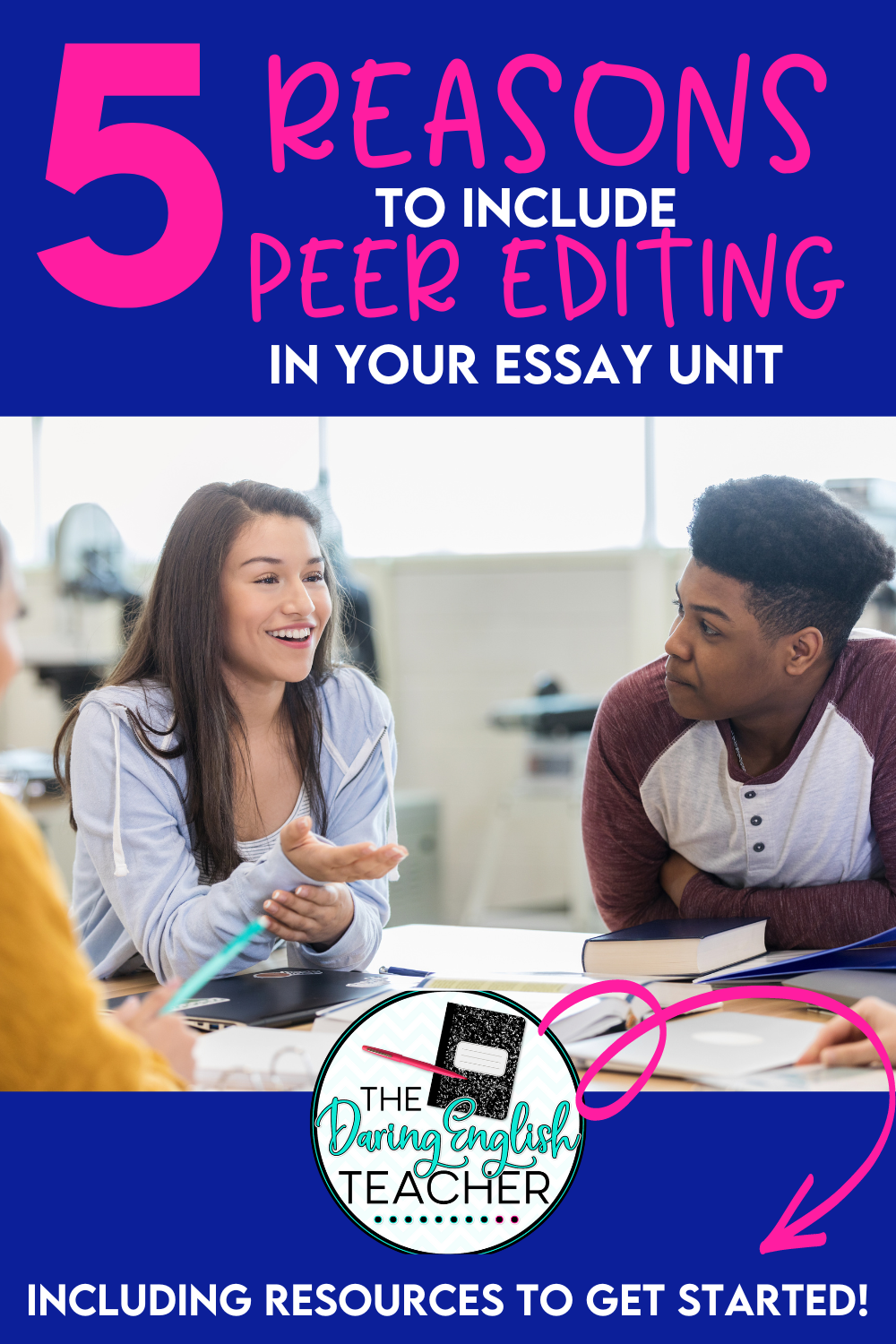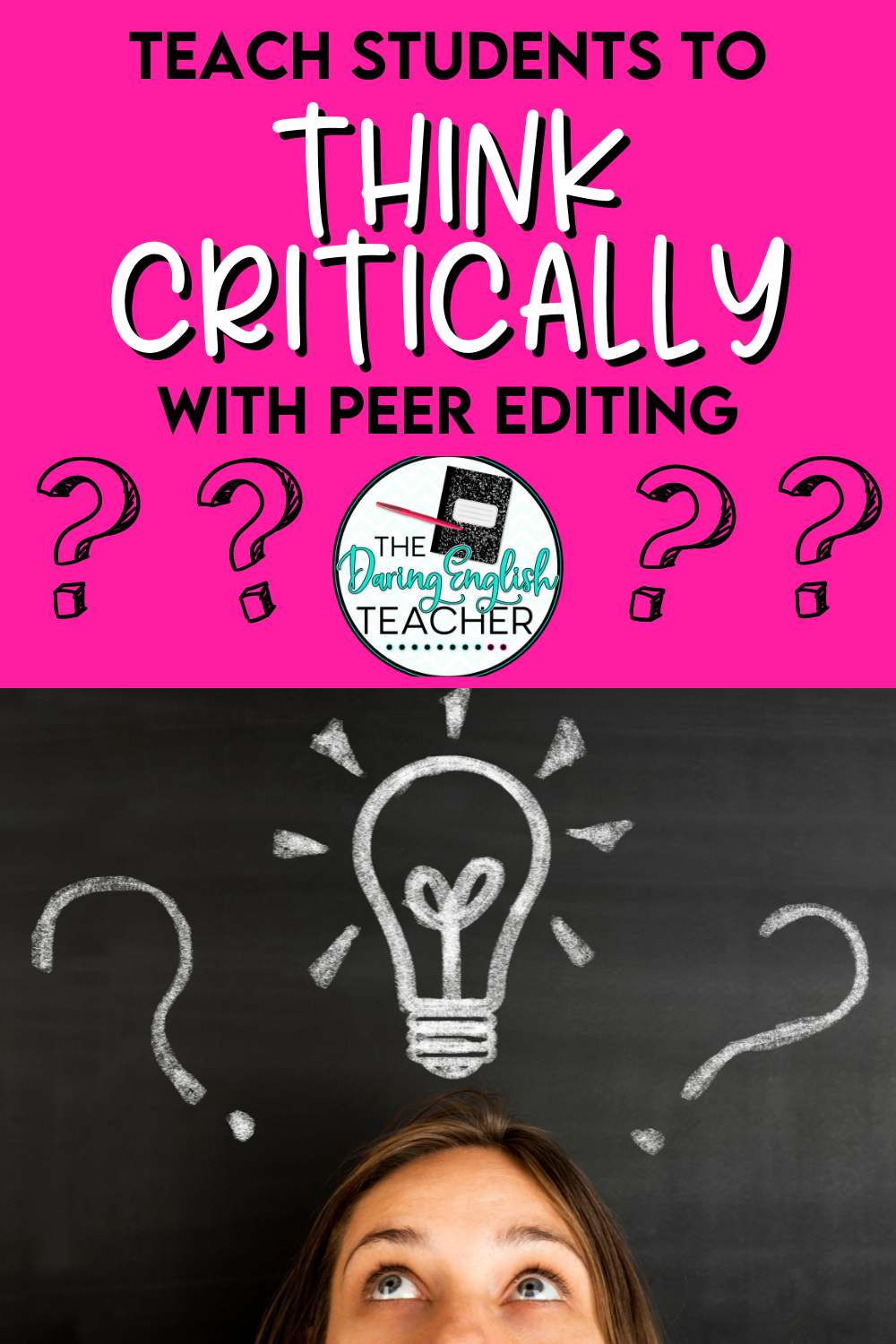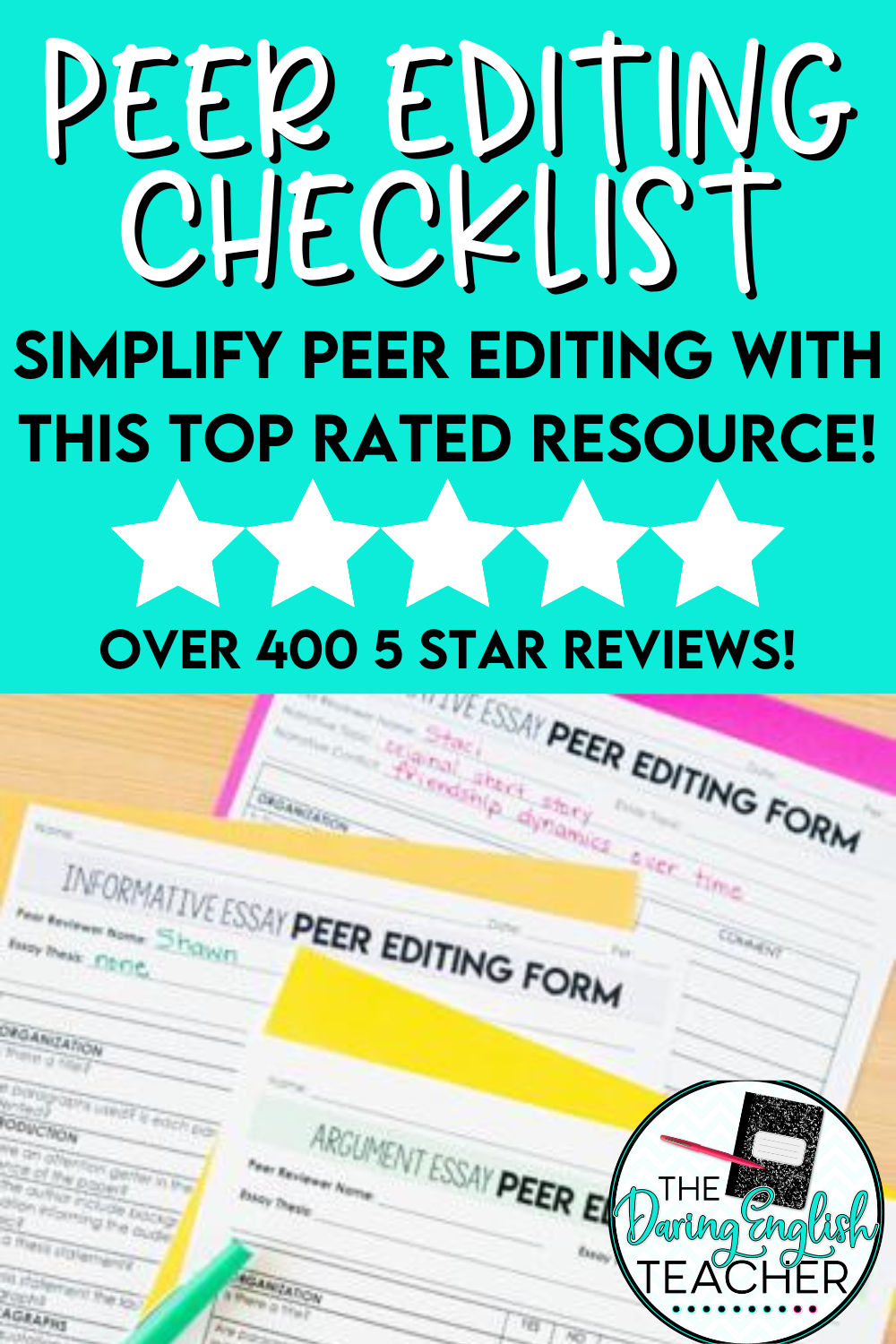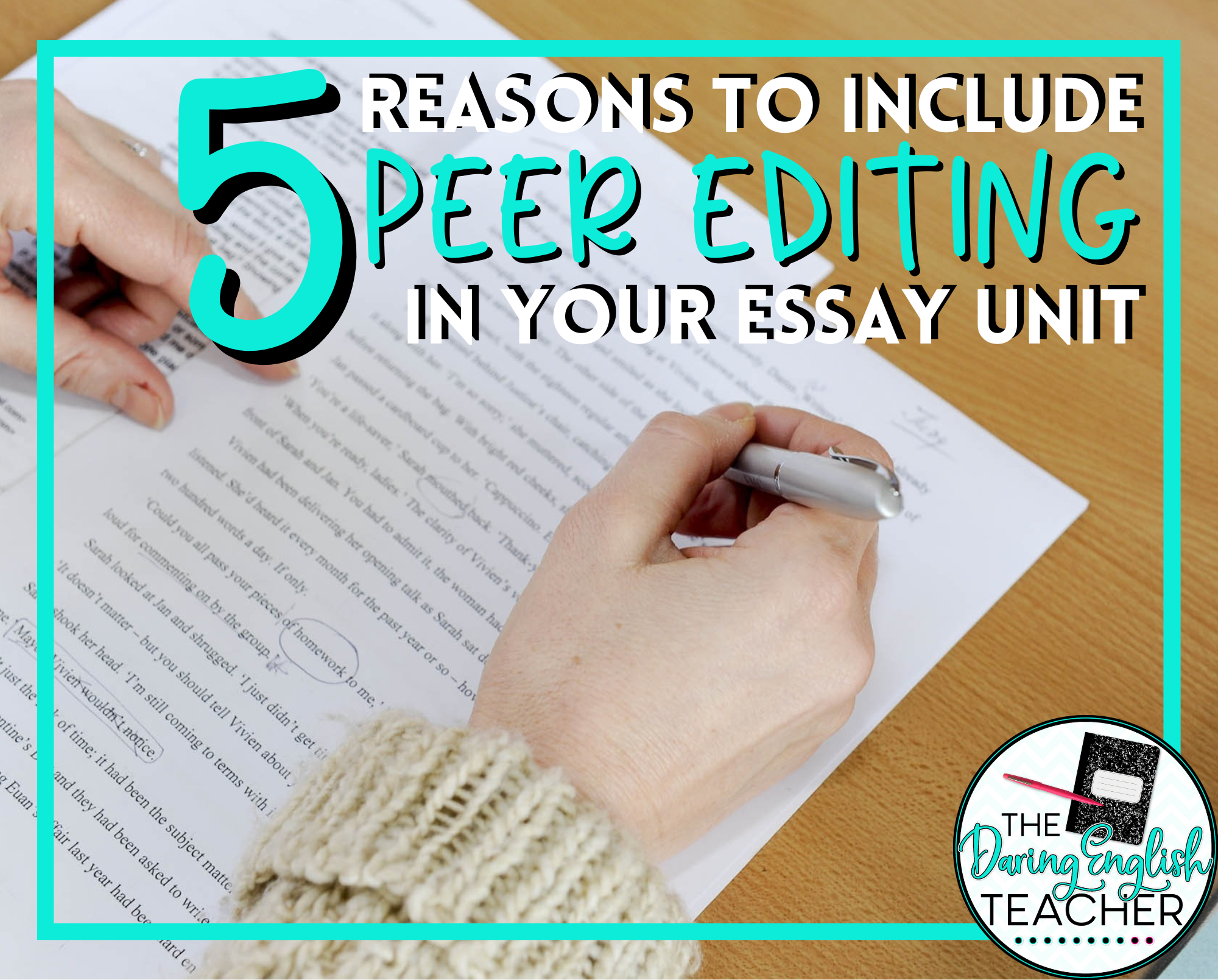If you haven’t incorporated peer editing into your essay units, you are truly missing out. Anytime I can use positive peer interactions in an assignment I find heightened engagement and a better turnout of essays. Find my top reasons for including peer editing below, and don’t forget to check out my resources.
Reasons why you should include peer editing in your next essay unit
1. So students can write to a wider audience.
When my students write essays that only I will read, they tend to write what they think I will like. Especially when students write later in the year, they’ve “been there done that” with writing for me. Most students know what I’m nitpicky in, possibly what my own biases are (even the most objective teacher may inadvertently share personal opinions from time to time). When they peer edit, they also consider the other students who will be reading the paper. In fact, I usually preface and emphasize that they are writing for the wider audience and NOT to just me.
2. So students are more engaged.
Without peer editing, you end up with students quietly typing for the entire writing portion of the unit. I find I spend a lot of time redirecting students to tasks because they get bored and need a break. When there are peer editing sessions, students can vocalize concerns, chat with peers about ideas for writing, and are in general more engaged with their writing. I also find students are more apt to finish work in a timely manner when they know they have the opportunity to have someone review their work before turning in a copy to be graded.
3. So students can think critically.
It is one thing to think critically while writing a paper. It is another to read someone else’s paper and assess it. Assessing and thinking critically about ideas and how they are formed in written format is an important skill. I find it helpful to start by providing students with a checklist. I also have them work from the same rubric I will use. We discuss what to think about when you are the reader, and the types of phrases and assessments that are most valuable to give to a writer.
 4. So students can learn appropriate criticism skills.
4. So students can learn appropriate criticism skills.
Not only do students need to learn how to criticize a work without being critical, but students also need to learn how to take criticism without taking it personally. When I frontload peer editing skills, I ensure students understand that the editing process is meant to help them improve as writers. My suggestion would be to introduce peer editing on research-type essays rather than any personal or creative writing essays. It can be challenging for students to separate themselves from essays that include their personal lives, or a creative work they’ve poured themselves into.
5. So you save yourself some time.
Of course, this isn’t the top reason, but it does save me some time. First, students who have taken the peer editing portion seriously tend to have fewer things for me to “grade.” When I’m not writing endless notes from students who turned in their one and only draft, I save myself some time. I also save some stress from trying to get in touch with each student for one-on-one sessions. Instead of trying to meet with every student by myself, they can meet with each other to get questions answered. I’m still available for specific questions, but I also find that I can answer to a group of students who pass around the answer as they work together. If I select peer groups based on strengths and weaknesses, I know that I’ve set students up to succeed by having my good editors with my poor spellers. My students who excel at ideas but not so much with organization can be paired with someone strong in that area. All in all, I save myself that stress and time simply by allowing my students to peer edit.
If you’re interested in peer editing resources, I have a checklist and a peer editing station resource available in my store. You can also find this great bundle of goodies if you’re looking for a full set of handouts and printables to introduce your students to peer editing.


